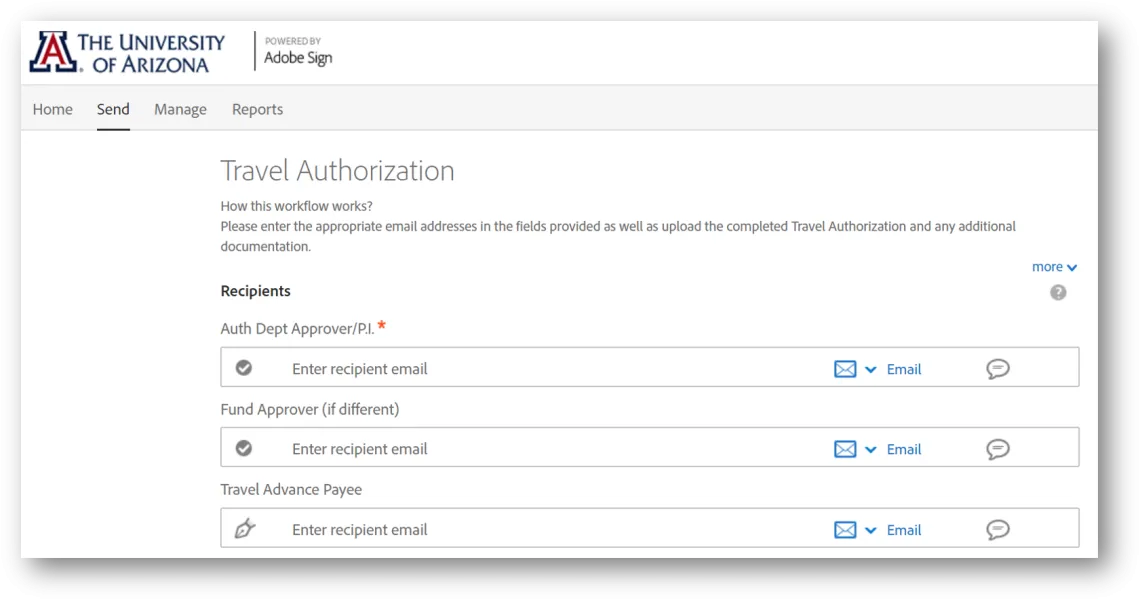UA Travel Forms Go Digital

Traveling on business can be tough. But travel, and lots of it, is essential to keep leading post-secondary institutions such as the University of Arizona on the path to success.
According to UA policy, every employee traveling more than 35 miles from their “duty post” needs a travel authorization to get reimbursed for costs. As many as 4,000 travel authorizations are approved each year by the university.
Until recently, that meant pushing a whole lot of paper. But in December, things changed thanks to the UA's adoption of electronic travel authorization forms. The new system is part of the UA Strategic Plan Initiative 5.2A Optimize business process and ways of working. It’s a move that will not only save trees, it will save the UA Travel Office countless hours of processing time, says UA Director of Accounts Payable Tammy Strom.
“What it means is we no longer need a paper footprint,” she says. “It puts information at a person’s fingertips, instead of having to go to a paper file.”
Electronic travel forms are especially good news for Bonnie Moreno, business manager in the UA Office of Academic Initiatives and Student Success. It’s a unit that demands a lot of travel, both domestic and international, from its people.
“We have more than 150 employees, and we assign significant trips a half-dozen to a dozen times every week," Moreno says. "That adds up.”
Under the old system employees would fill out forms that their supervisors would then send to the Travel Office. With the new computer program, information is submitted online, making the entire process much quicker. Moreno says approval times, “which used to average about a week, have been reduced to minutes.”
Christopher Stahoviak, one of the two principal accountants at the UA College of Medicine – Phoenix, agrees. Stahoviak’s unit handles around 230 travel authorizations every year. He says the electronic system has cut approval times dramatically and eliminated mistakes and lost claims.
“It has definitely streamlined the process here, It’s made it so much easier and more efficient,” he says. “In the past, it could take a week-and-a-half to get a travel authorization finalized. Now, it gets done in a day.”
As with almost any switch from paper to digital, Stahoviak acknowledges there is a degree of resistance from users.
“But it is so much better and so much quicker," he added. "We can already see a growth in the acceptance of the new technology.”
